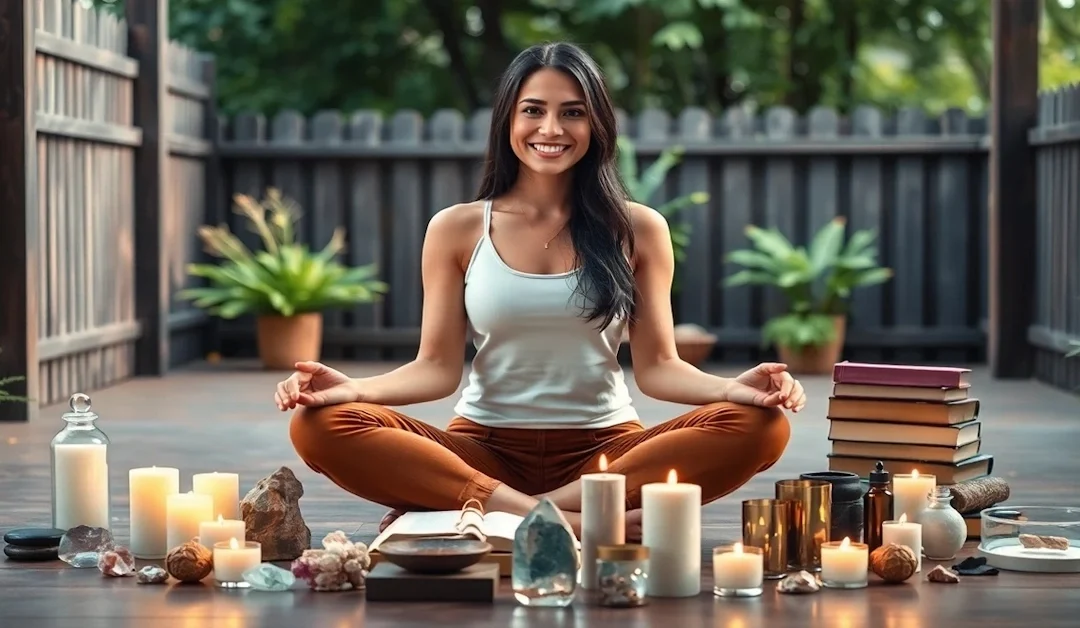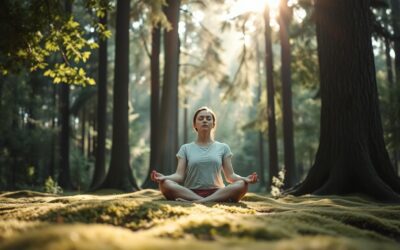Have you ever wished there was a magic pill that could instantly dissolve stress and anxiety? While we can’t provide you with a pill, we can offer something even better – seven effective relaxation exercises that can help you find relief from the daily grind.
Whether it’s through mindful breathing or gentle yoga poses, these exercises have been proven to lower cortisol levels and activate your body’s natural relaxation response. So if you’re ready to ditch the stress and embrace tranquility, keep reading as we dive into the world of relaxation techniques.
I. Mindful Breathing for Relaxation
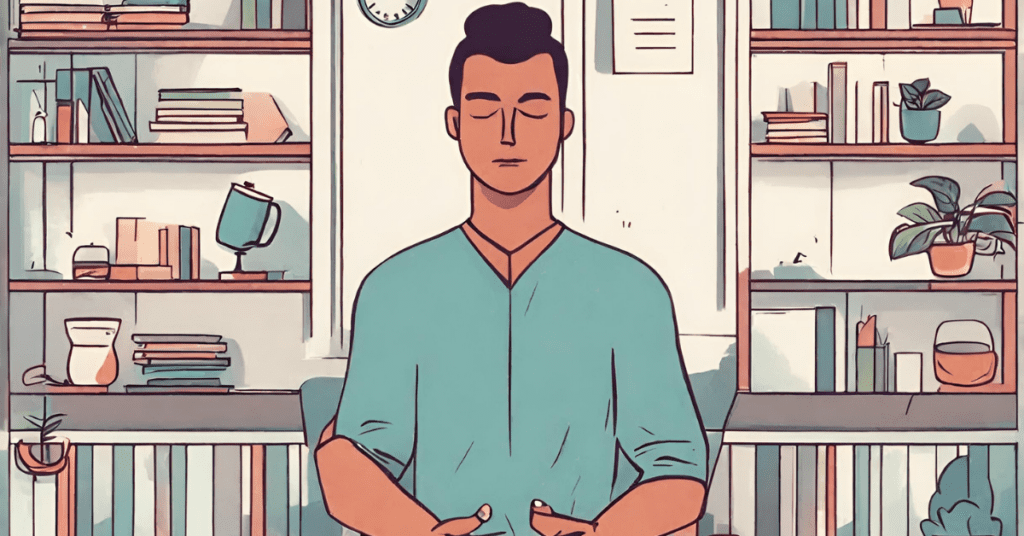
Mindful breathing is a powerful relaxation tool that can be used anywhere, anytime. Just a few minutes of mindful breathing can help to reduce stress, improve mood, and promote overall well-being.
There are many different ways to practice mindful breathing, but one simple way to get started is to focus on the breath as it enters and leaves the body. Simply notice the sensation of the breath as it moves in and out of the nostrils. You might also place one hand on the chest and one hand on the belly to feel the rise and fall of the breath.
Another way to practice mindful breathing is to count each breath. Inhale for a count of four, then exhale for a count of four. Continue this pattern for a few minutes, or longer if desired.
There are many other ways to practice mindful breathing. Experiment and find what works best for you. Some people like to focus on the breath while walking or doing other activities. Others find it helpful to practice mindful breathing with their eyes closed.
Benefits of Mindful Breathing for Relaxation
- Mindful breathing helps to control the nervous system
- Mindful breathing lowers blood pressure
- Mindful breathing improves heart health
- Mindful breathing boosts the immune system
- Mindful breathing eases anxiety
Mindful breathing is a simple but powerful relaxation tool that can be used anywhere, anytime. Just a few minutes of mindful breathing can help to reduce stress, improve mood, and promote overall well-being.
II. Mindful Movement Practices
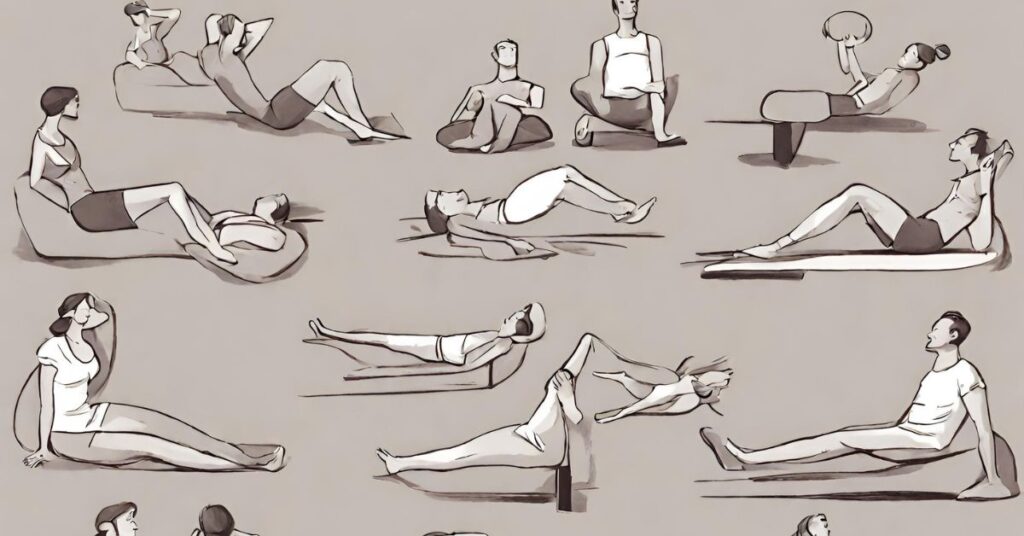
Mindful movement practices can help us to become more aware of our bodies and the way we move through space. They can also help to reduce stress and promote relaxation.
There are many different mindful movement practices that we can explore, ranging from simple stretching and breath work, to more complex yoga and Tai Chi movements. Whatever practice we choose, the key is to be present and aware of our bodies as we move.
When we are moving mindfully, we are not only paying attention to our physical body and the movements we are making, but also our breath. Breathing is an important part of all mindful movement practices, as it can help to regulate our nervous system and promote relaxation.
There are many benefits to practicing mindful movement, including increased body awareness, stress reduction, and improved physical mobility. Mindful movement can also be a great way to connect with our bodies and feel more grounded in our physicality.
Benefits of Mindful Movement Practices
- Enhanced Physical Wellbeing
- Stress Reduction
- Improved Focus and Concentration
- Emotional Balance
- Increased Mind-Body Connection
Incorporate mindful movement into your daily life and embark on a journey where each movement is a step towards enhanced physical vitality, mental clarity, and emotional tranquility.
III. Aromatherapy Yoga
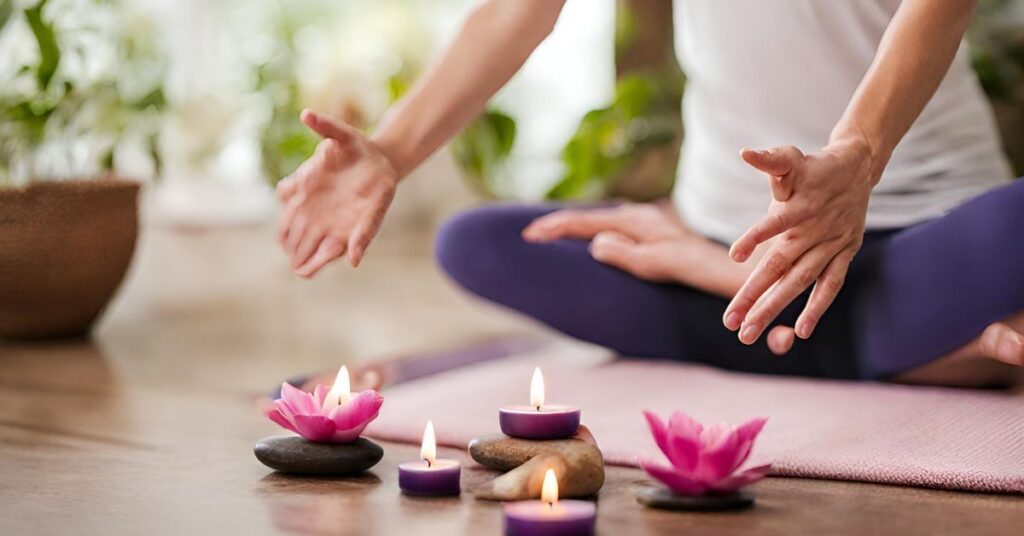
If you’re looking for a workout that’s both invigorating and relaxing, look no further than aromatherapy yoga! This type of yoga combines the benefits of yoga with the power of essential oils.
Aromatherapy yoga can be a great way to reduce stress and tension. The essential oils used in this type of yoga can help to promote relaxation and ease anxiety. They can also help to improve circulation and boost energy levels.
There are a few things to keep in mind when you’re planning an aromatherapy yoga session. First, you’ll need to choose the right essential oils. Lavender oil is a good choice for relaxation, while peppermint oil can help to ease tension headaches. You’ll also need to make sure that the room you’re using for your yoga session is well-ventilated.
Once you’ve chosen your essential oils and prepared the room, you’re ready to begin your aromatherapy yoga session! Start by inhaling the scent of your chosen oil. Then, begin your yoga routine. Focus on your breath and allow the essential oil to work its magic.
When you’re finished with your yoga session, take a few minutes to sit quietly and enjoy the feeling of relaxation. Be sure to drink plenty of water to stay hydrated. Then, enjoy the rest of your day!
Benefits of Aromatherapy Yoga
- Enhanced Relaxation
- Increased Focus and Clarity
- Elevated Mood
- Deepened Yoga Practice
- Boosted Immune System
Indulge in the holistic embrace of aromatherapy yoga, where the harmonious dance of aroma and movement unlocks a sanctuary of relaxation, clarity, and revitalized health, nurturing body, mind, and spirit.
IV. Progressive Muscle Relaxation
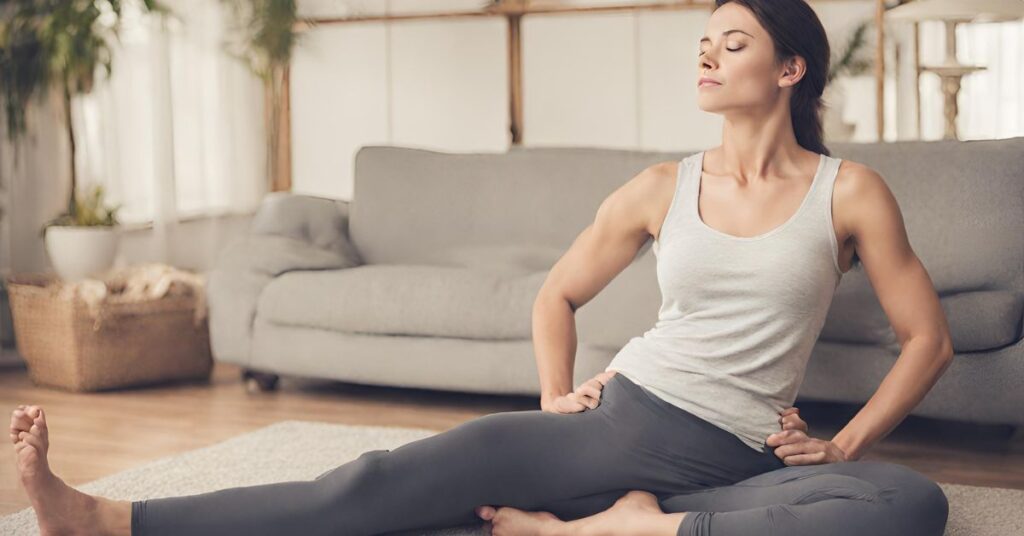
For some people, relaxation comes naturally. For others, it must be learned. Progressive muscle relaxation (PMR) is a technique that can be used to learn how to relax.
The basic principle behind PMR is that muscular tension and relaxation are opposites. When you tense a muscle, the muscle relaxes. When you relax a muscle, the muscle tension disappears.
To do PMR, you first need to find a comfortable position. You can sit or lie down. Once you are comfortable, you can begin the exercises.
Exercise 1: Start by tensing the muscles in your toes. Curl your toes inward and hold for a count of 10. Then, relax your toes and feel the tension disappear.
Exercise 2: Next, tense the muscles in your feet. Point your toes and hold for a count of 10. Then, relax your feet and feel the tension disappear.
Exercise 3: Move up to your calves and tense the muscles. Point your toes and raise your heels off the ground. Hold for a count of 10. Then, relax your calves and feel the tension disappear.
Exercise 4: Tense the muscles in your thighs. Squeeze your legs together and hold for a count of 10. Then, relax your thighs and feel the tension disappear.
Exercise 5: Tense the muscles in your buttocks. Clench your buttocks and hold for a count of 10. Then, relax your buttocks and feel the tension disappear.
Exercise 6: Tense the muscles in your stomach. Clench your stomach muscles and hold for a count of 10. Then, relax your stomach and feel the tension disappear.
Exercise 7: Tense the muscles in your arms. Raise your arms above your head and clench your fists. Hold for a count of 10. Then, relax your arms and feel the tension disappear.
Exercise 8: Tense the muscles in your neck and shoulders. Raise your shoulders and clench your teeth. Hold for a count of 10. Then, relax your neck and shoulders and feel the tension disappear.
Exercise 9: Tense the muscles in your face. Clench your jaw and eyes tight. Hold for a count of 10. Then, relax your face and feel the tension disappear.
Once you have tensed and relaxed all of the muscle groups, take a few deep breaths and feel the relaxation spread throughout your body.
Benefits of Progressive Muscle Relaxation
- Stress Reduction
- Improved Sleep Quality
- Enhanced Muscle Awareness
- Alleviation of Anxiety
- Pain Management
Embark on the journey of Progressive Muscle Relaxation, where each session is a step towards a life characterized by reduced stress, enhanced sleep, and a serene and focused mind, nestled in a relaxed and pain-free body.
V. Autogenic Relaxation

Autogenic relaxation is a method of relaxation that involves the use of visualization and self- suggestion to achieve a state of deep relaxation. The technique was developed by German psychiatrist Johannes Heinrich Schultz in the early 1900s and has since been used by many people to help alleviate stress and anxiety.
The basic premise of autogenic relaxation is that, by using visualization and positive self-talk, you can train your body to respond to stressful situations in a more relaxed manner. In other words, you can “trick” your body into thinking it’s in a state of rest, even when it’s not.
There are a number of different autogenic relaxation exercises that you can do, but they all involve the same basic steps:
1. Find a comfortable place to sit or lie down.
2. Close your eyes and take a few deep breaths.
3. Begin to focus on your breath and count each inhale and exhale.
4. Once you’ve reached a state of deep relaxation, start to focus on your body and imagine it becoming heavy and warm.
5. Repeat positive affirmations to yourself, such as “My arms are heavy and warm” or “I am feeling calm and relaxed.”
6. Continue focusing on your breath and body until you reach a state of complete relaxation.
If you’re new to autogenic relaxation, it may take a few tries to reach a state of deep relaxation. But with practice, you should be able to do it within 10-20 minutes.
Autogenic relaxation is a great way to reduce stress and anxiety, and it can be done anywhere, at any time. So if you’re feeling stressed out, give it a try!
Benefits of Autogenic Relaxation
- Stress Reduction
- Improved Sleep Quality
- Enhanced Concentration
- Reduced Anxiety Levels
- Increased Physical Relaxation
Autogenic relaxation stands as a sentinel of tranquility amidst the chaos of modern life. Through its simple yet profound practice, it weaves a sanctuary of peace, offering an escape into a world where stress dissolves into serenity, sleep is a journey into profound restfulness, and the mind finds its sanctuary of focus.
VI. Yoga for Relaxation
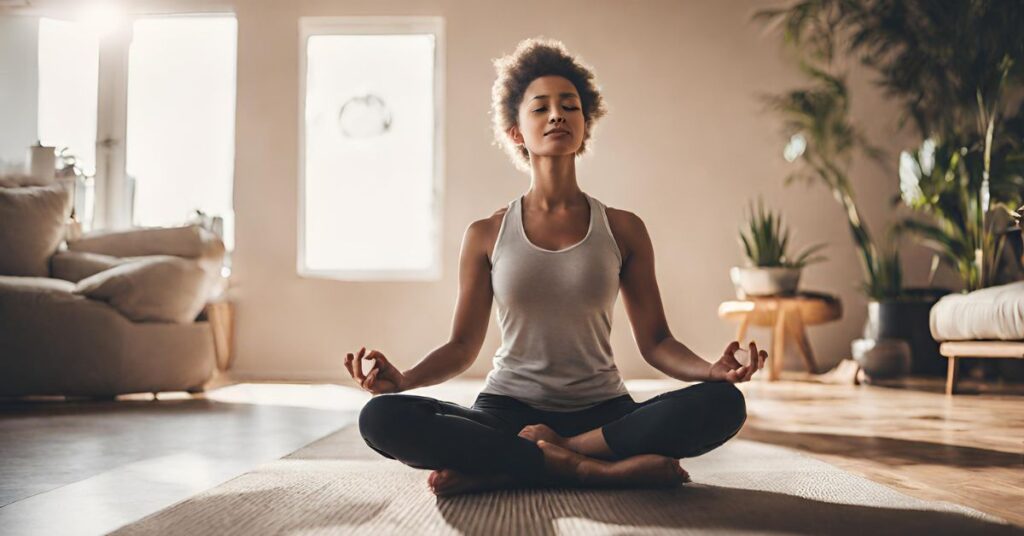
There are many different types of relaxation exercises, but one of the most popular is yoga. Yoga is said to be beneficial for both the mind and body, and can be a great way to de-stress and unwind.
There are a variety of different yoga poses, or asanas, that can be used for relaxation. Some of the more common ones include the child’s pose, the cat-cow pose, and the corpse pose.
Child’s Pose: This pose is often used as a resting pose in between other asanas. To get into child’s pose, start on all fours with your hands and knees shoulder-width apart. As you exhale, slowly lower your buttocks towards your heels and stretch your arms out in front of you, relaxing your forehead to the floor. Hold this position for as long as you like, breathing deeply.
Cat-Cow Pose: This pose is a great way to stretch your back and neck muscles. To get into cat-cow pose, start on all fours with your hands and knees shoulder-width apart. As you inhale, arch your back and look up towards the ceiling. As you exhale, round your back and tuck your chin towards your chest. Repeat this sequence a few times, moving slowly and smoothly with your breath.
Corpse Pose: This pose is the ultimate pose for relaxation. To get into corpse pose, lie down on your back with your feet hip-width apart and your arms by your sides, palms up. Close your eyes and let your whole body relax, letting go of any tension you may be holding. Stay in this pose for as long as you like, breathing deeply.
Yoga is a great way to relax and de-stress, but it’s important to remember that it’s not for everyone. If you have any injuries or health conditions, please consult your doctor before beginning any yoga practice.
Benefits of Yoga for Relaxation
- Enhanced Flexibility
- Reduced Stress
- Improved Sleep
- Increased Strength
- Emotional Balance
Embracing the ancient practice of yoga is akin to embarking on a transformative journey where the body, mind, and soul converge in a symphony of relaxation. Each pose and breath unfolds a narrative of enhanced flexibility, where muscles and joints find their rhythm of freedom.
Stress, the unwelcome companion of modern existence, dissipates with every mindful stretch, making room for a tranquility that permeates the very essence of being.
VII. Nature Connection Practices
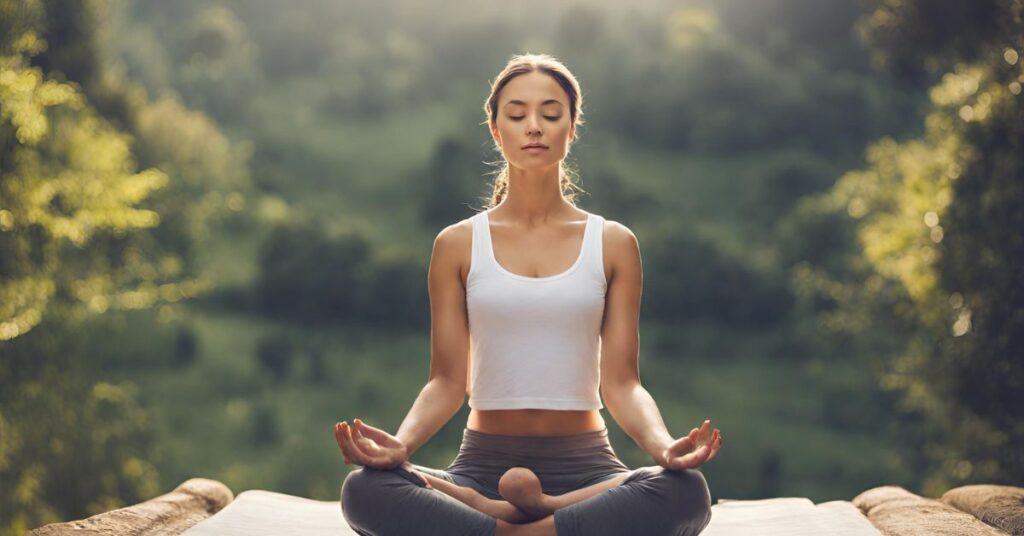
There are many benefits to spending time in nature, including reducing stress, improving mood, and increasing energy levels. One way to increase your nature connection is to practice relaxation exercises in a natural setting. Here are some tips for finding a peaceful spot and incorporating nature into your relaxation routine:
1. Look for a place with minimal distractions. This could be a park with few people, a forest, or even your backyard.
2. Once you’ve found a spot, take a few deep breaths and close your eyes. Listen to the sounds of nature and focus on the feel of the sun or breeze on your skin.
3. If your mind starts to wander, gently bring it back to the present moment. Pay attention to the sounds of the birds, the wind, and the rustling of leaves.
4. Take some time to walk barefoot on the earth. This helps ground you and connects you with the natural world around you.
5. Spend at least 10-15 minutes in nature each day. You may want to gradually increase the amount of time you spend as you feel more comfortable.
Practicing relaxation exercises in nature is a great way to reduce stress and increase your connection with the natural world. By taking some time each day to appreciate the beauty around you, you can improve your overall wellbeing.
5 Core Benefits of Nature Connection Practices
- Enhanced Mental Wellbeing
- Stress Reduction
- Improved Mood
- Increased Creativity
- Boosted Immune System
Immersing oneself in the harmonious embrace of nature is like embarking on a journey to the soul’s natural sanctuary. Nature connection practices invite a revival of mental wellbeing, where the clutter of urban life fades and the mind finds clarity amidst the silent whispers of the earth. – Unknown
Stress, an omnipresent shadow, retreats under the gentle touch of nature’s tranquil breath. Each natural element, from the rustling leaves to the flowing streams, contributes to elevating mood and igniting a spark of joy that is both profound and enduring. – Unknown
Incorporating Relaxation Exercises Into Your Life
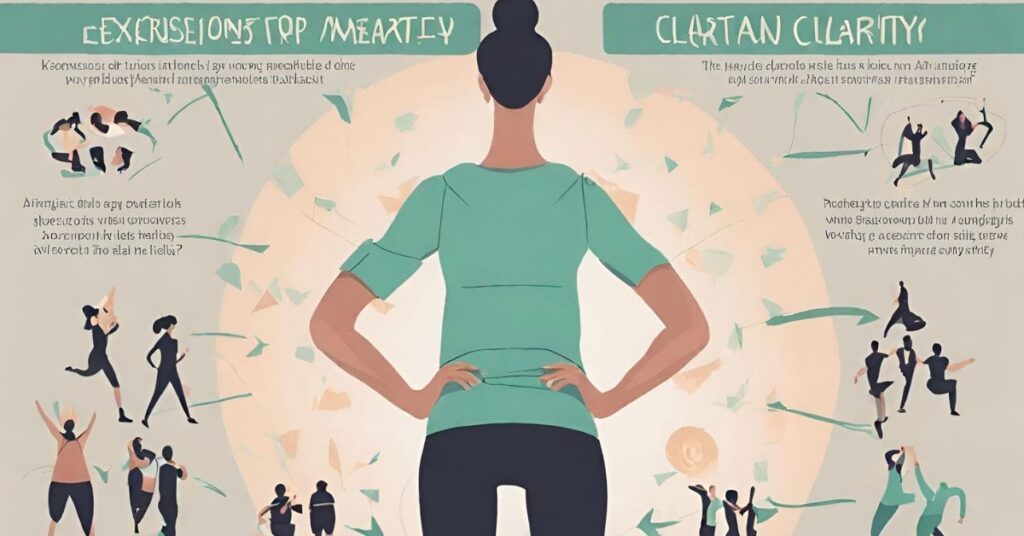
We all know how important it is to keep our stress levels in check. Too much stress can lead to all sorts of health problems, both mental and physical. That’s why it’s so important to find ways to relax and de-stress on a regular basis. One of the best ways to do this is by incorporating relaxation exercises into your life.
Relaxation exercises can take many different forms. Some people prefer to meditate, while others find yoga or Tai Chi to be more effective. There are even some simple breathing exercises that can help to relax and calm the mind and body. No matter what form they take, relaxation exercises all have one goal: to help you feel more relaxed and at ease.
One of the great things about relaxation exercises is that they can be done anywhere, at any time. You don’t need any special equipment or clothing, and you can do them in the comfort of your own home. That means there’s no excuse not to make time for them in your busy schedule.
Start by setting aside a few minutes each day to focus on relaxation. If you can, find a quiet spot where you won’t be interrupted. Once you’re comfortable, start your chosen relaxation exercise. Focus on your breath and on letting go of any tension in your body. If your mind starts to wander, simply bring your attention back to your breath.
With regular practice, you’ll find that you’re able to relax more easily and more deeply. You may even find that your stress levels start to decrease overall. So what are you waiting for? Incorporate relaxation exercises into your life today and feel the benefits for yourself.
FAQ on Relaxation Exercises
Q: What are relaxation exercises?
A: Relaxation exercises are techniques or activities designed to reduce stress, anxiety, and tension. They promote mental calmness, physical relaxation, and overall well-being.
Q: What are some common types of relaxation exercises?
A: Some popular types include deep breathing, progressive muscle relaxation, guided imagery, meditation exercises, autogenic relaxation, and yoga. Each has its unique approach to promoting relaxation and reducing stress.
Q: How do relaxation exercises benefit mental health?
A: These exercises can lower stress levels, reduce anxiety, improve mood, and enhance overall mental well-being. They promote mindfulness and improve focus and concentration.
Q: Can relaxation exercises improve physical health?
A: Yes, they can improve sleep quality, reduce muscle tension, enhance respiratory and cardiovascular health, and boost the immune system.
Q: How often should I practice relaxation exercises?
A: It varies for each individual. However, incorporating relaxation exercises into your daily routine can provide the best results. Even a few minutes daily can make a significant difference.
Q: Are there any side effects of relaxation exercises?
A: Relaxation exercises are generally safe for most people. However, it’s always best to consult with a professional if you have underlying health conditions or concerns.
Q: Can relaxation exercises replace medical treatment?
A: While they are a valuable tool for enhancing well-being, relaxation exercises should not replace prescribed medical treatments. They can complement medical approaches but always consult with your doctor.
Q: Can children and older adults practice relaxation exercises?
A: Yes, relaxation exercises can be adapted for all age groups, including children and older adults, offering benefits tailored to their specific needs.
Q: How can I learn relaxation exercises?
A: Many resources are available, including online tutorials, workshops, apps, and books. Consider seeking professional guidance to learn the proper techniques.
Q: Can relaxation exercises help with chronic pain?
A: They can be an integral part of pain management strategies. By reducing tension and promoting relaxation, these exercises can alleviate discomfort associated with chronic pain.
These FAQs aim to provide insights and clarity on relaxation exercises, offering a foundation for those looking to embark on a journey of enhanced well-being, reduced stress, and holistic tranquility.

